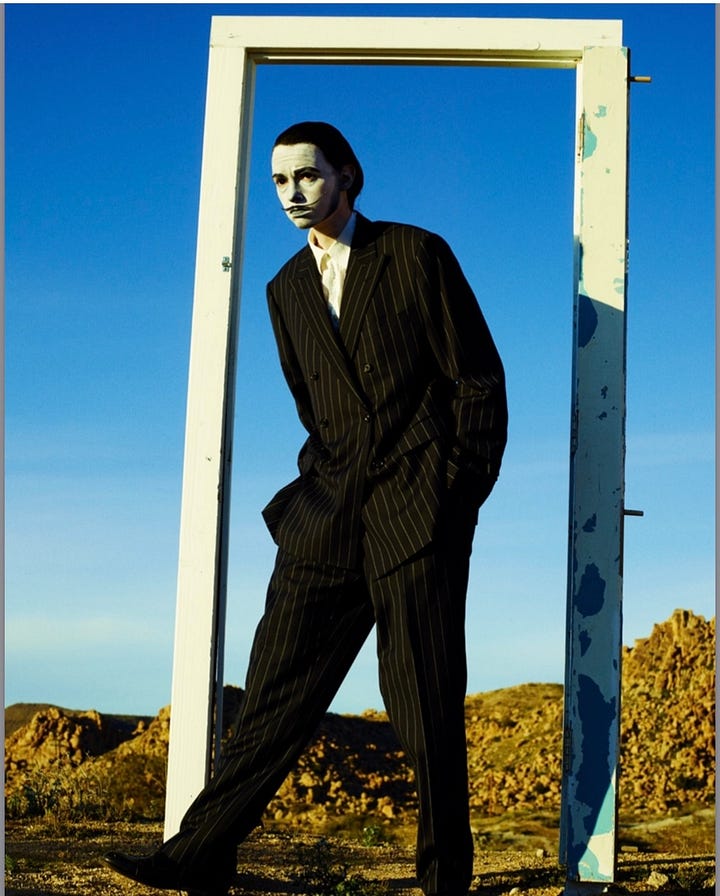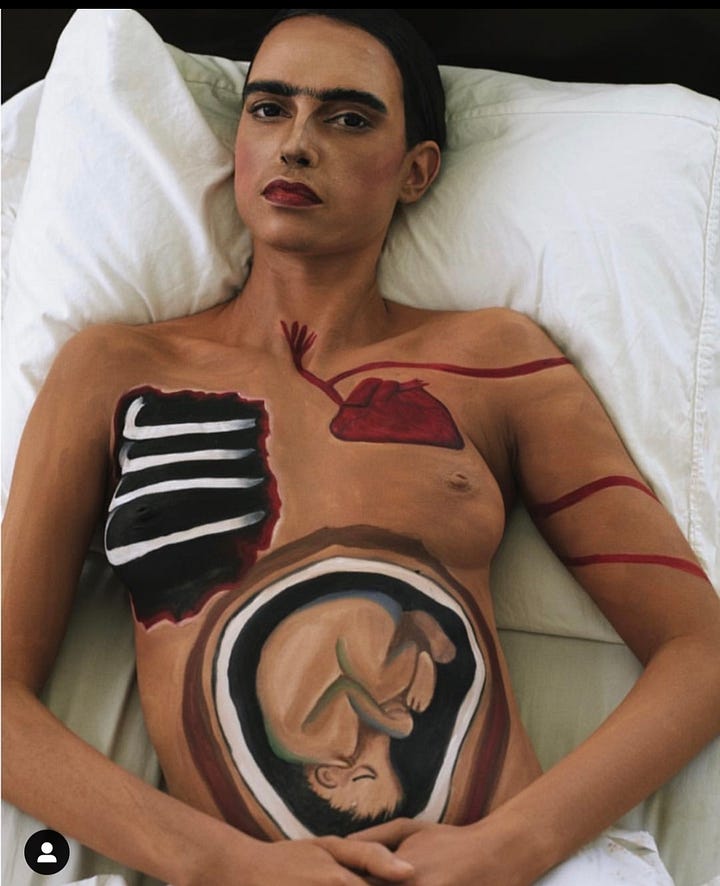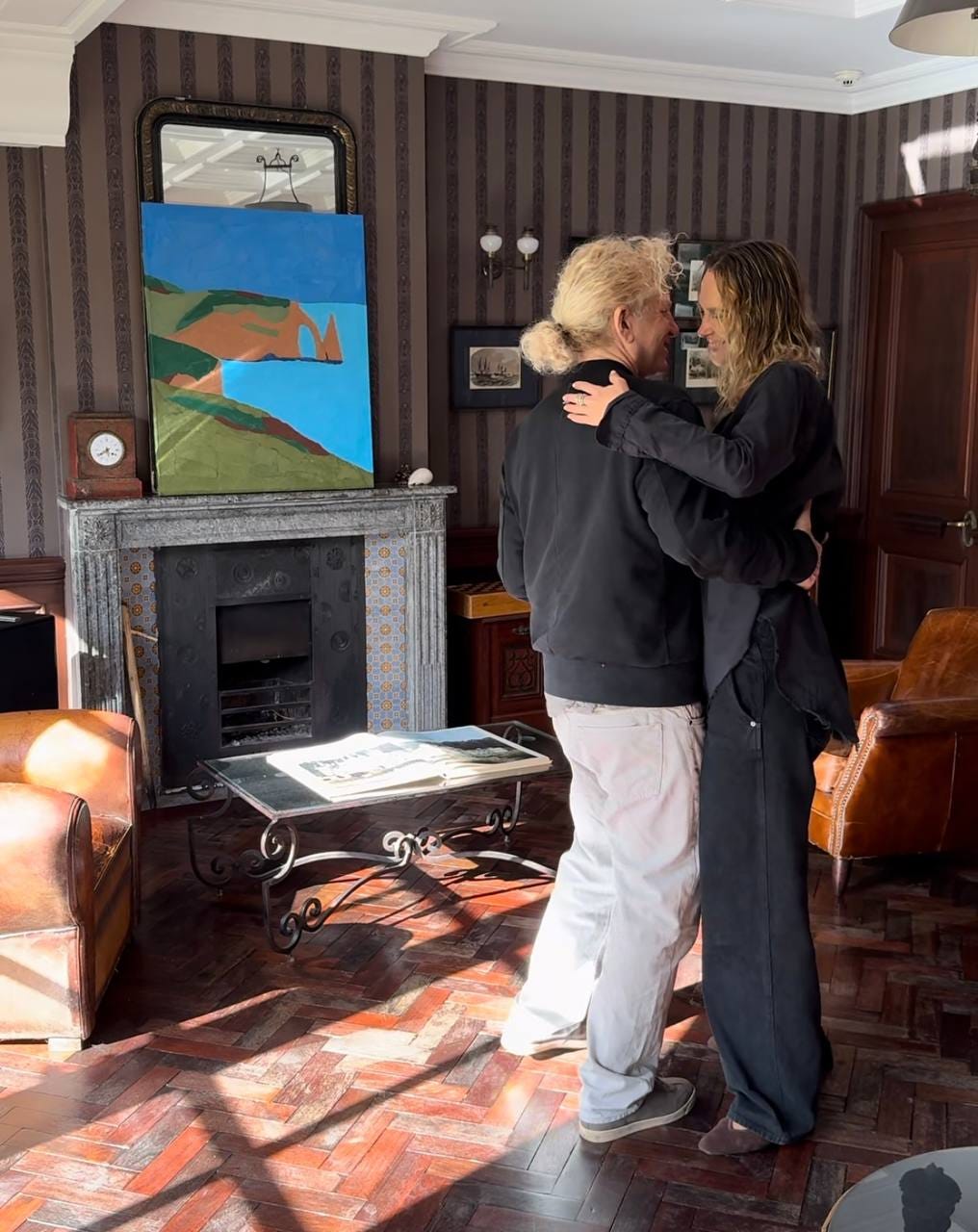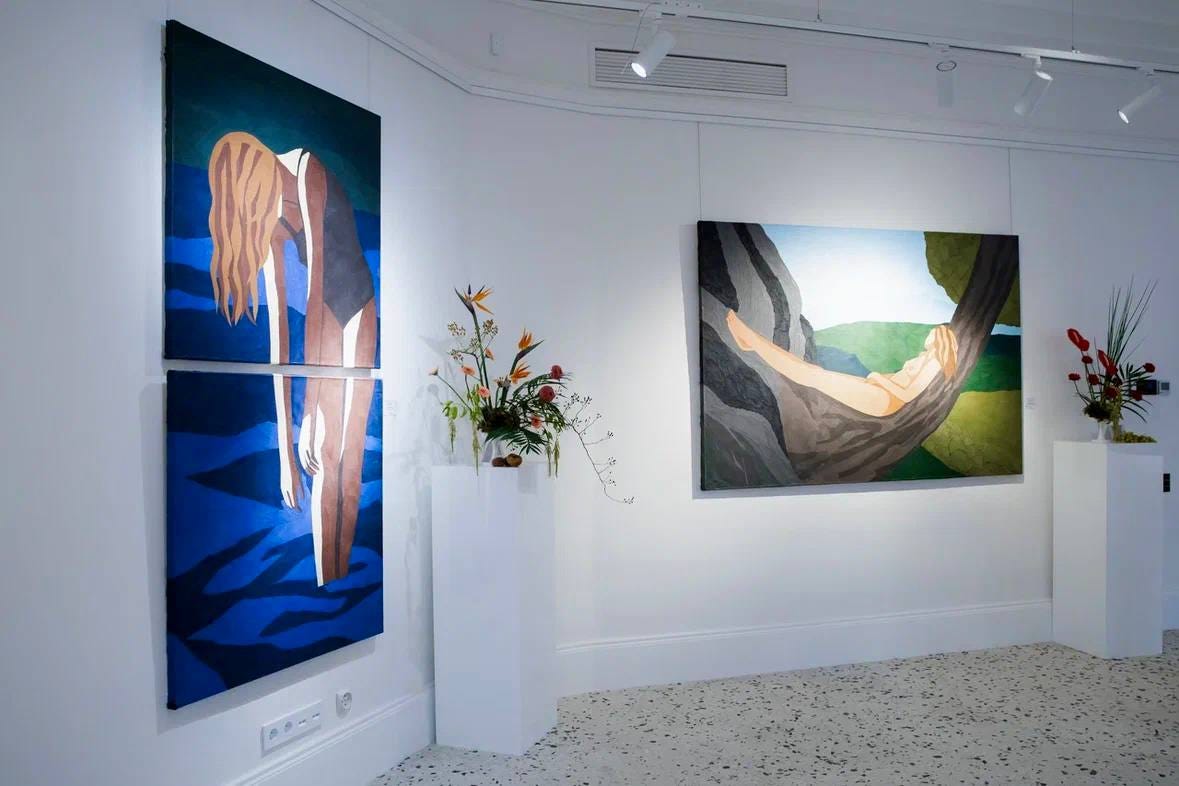Welcome to the ‘Mind Palaces’ series, curated conversations with artists, writers, and other creatives that explore personal philosophies on the creative process. To inaugurate this series, it was a pleasure to speak with Masha Rudenko, a Florence-based Russian artist whose work is a love letter to the female form as a landscape of resilience and healing. We hope you find some treasures for your own creative process here x
AS: The human form plays such a prominent role in your work. How do you see your body as a vehicle for storytelling?
MR: I have experienced the body in many ways. I worked as a model for 20 years, where my body was my pain. It was something I couldn’t accept, so it was something that I always looked down at and judged. Because I didn’t have a connection with it, I saw it only as a vehicle to make money in the fashion industry. Then when I started making art, I had to find a subject matter for my collages. I was in nature and wanted to see something and express something. Then I realised what I had was myself and my body. I already did so many drawings for my husband before and after working as a model, I really knew my body. And now, looking back, I understand that the body is what connects all my projects together.
MR: I started to pose for my own paintings to create a mood and an emotion through my body language, where my body itself was a landscape and a place. I developed my own collage technique: I take a photo of myself, then I cut pre-coloured paper and glue them onto a canvas in a way to mimic the photo. I invented this technique during one of my trips with my husband, when we rented a house in Italy so beautiful that I wasn’t allowed to paint in oil there. It’s tricky because oil gets into furniture and it’s so hard to handle, and I was moving from one place to another so frequently that I needed a technique that dries fast that I could roll in a tube and go. I had to become innovative, so I created my own collage technique! It’s funny, they say “people who do collages are a bit mentally ill,” because they’re destroying their world and building it again. I realised that this technique came from my own lack of self-acceptance: I break my whole self-image and re-create it again.
MR: I always want to convey an emotion, so I am always an instrument of myself. In my series ‘Mashpit,’ I used my body as a canvas and turned myself into twelve different personalities, like Woody Allen, Quentin Tarantino, Grace Jones, and Jimi Hendrix. This project really connected the dots in my understanding of my body: it is the place where I play, but it is also a vehicle of my creativity. The more I started to write about and analyse my work using psychoanalysis, I understood that my work shows my reaction to the world and what is happening around me. I realised there is so much depth to the body, and so much space for innovation; it’s like a dark black hole of information and creativity.
AS: Would you say that the chameleon-like nature that you developed in your job as a model lay a fruitful foundation for your work as an artist?
MR: Yes, for sure. When I started my first project,‘Mashpit’, I just wanted to create. I knew how to compose pictures from my modeling career: how to style, pose, and use the body to tell a story. For every exhibit of my work, I know how to position individual pieces to create a dialogue between them. This skill was developed through my modeling experience, which also developed my eye for colour harmonies and interesting compositions.


AS: You mentioned you started analysing your work through a psychological lens. Do you think adopting an artful mind, seeing the world through an artistic lens and developing personal creativity can ease psychological and physical struggles? And how has that been experienced in your own life?
MR: When doors closed during Covid, my paintings also changed because of isolation. While normally you observe the world outside, then you were forced to look at your inner world. This led to my first solo show called “Between Realities,” a series that blurs the lines between different states of being. I would create poses that conveyed travel to different places but from one physical position. For example, one piece showed me in a sleeping position to suggest the shift from wakefulness into a dream state, while a reading pose in another work signalled an escapist mood, where the physical body is ‘here,’ but the mind occupies a different place entirely.
All my projects are inspired by what I am living at that moment in time. I had another project called ‘Conference of the Birds,’ the name inspired by a work by Sufi poet, Attar. I have this connection with birds, so when they started to appear more around me, I used them as elements in my paintings. Then I came to realise that birds represent my soul. I lived in Tuscany, and whenever I would drive, I would see cables with birds sitting on them and I would do voiceovers imagining their conversations. When the war started, I was really upset about what’s going on in the world. And I had to change the way I saw reality to make it make sense for myself. I found a book called Conference of the Birds about how birds gather to find God and they fly through different valleys in search of him. But in the end, they don’t find him and just see reflections of themselves. When they get to the last valley, they see this lake and see their own reflection only to realise that they are God themselves, that they are one unity. The birds represent humans, and I really like this poetic approach of connectivity with the world and nature. Through that I understood what it means to see the world through the eyes of a bird: you could come close to what’s happening in the world, but as a bird, you could observe it from a distance, where you can see everything from a higher perspective.
AS: I love your connection to birds. I myself feel like maybe I was a bird in a previous life. I really believe God or universal energy {however you wish to call it} communicates with us through nature. And I think that's one of the reasons that your work resonates so much with me because it's all about the rawness of being human, but also the beauty and majesty of the body as a vessel for something bigger than us. And that's also something that I find in nature and why your work is so timeless, because you capture the human spirit through the body and nature.
MR: Oh, I'm going to cry now. When you make something, you never think your art can evoke such strong feelings in others. And I just had goosebumps.
AS: Continuing our conversation on birds, I would love to talk about the mockingbird video montage that was later a Mavericks Release NFT at the Decontrol Art Pavillion in Venice. You project a video of a mockingbird referring to the 1950 CIA’s initiative Operation Mockingbird, which was formed with the aim of influencing society through news, films, and media channels. On this note, what is your perception of authenticity in society today? And what does authenticity mean to you? We’re like parrots simply echoing those around us and everything almost seems monotonous and the same. I believe artists play a role in recreating originality and give birth to new perceptions of the world. Do you think there is a way to regain intellectual purity and originality in a world of ‘copy pasting’ each other?

MR: In this work I am using my body as a canvas and there's a projection of newscasters talking on my body and their voices speaking through the voices of the birds. I chose the mockingbird because it’s a bird that repeats the sounds of its environment. But also while she repeats, she can also create her own songs. At first you think that she purely echoes her surroundings, but it's beautiful when you realise that she actually creates her own songs through that knowledge. We have access to so much information and we are constantly bombarded by other people’s lives and creativity that we feel like we lose our own identity. If we consume everything from the outside, there will be no space for us to experience and hear ourselves. We need to give room for our minds to breathe.
AS: How does nature shape your wellness practices, if at all? And how do wellness and health rituals play a role in your creative process? What does creative and physical wellness mean to you?
MR: The environment I’m in really affects my creative output. I like to live close to nature, as it gives me more time to relax, to work. In the mornings, I create time for my soul through spa rituals. Then when I feel relaxed, I start to work. I really know that my source of creativity is a relaxed body and mind.
AS: How has your recent health issue lent a new perspective on your body and your art? Do you believe that art can heal?
MR: For the past 15 years I suffered from fibrosis and had to undergo surgery to get it out of my body. The healing stage was very difficult as I couldn’t get out of bed at all. I had no energy in my body, very weak arms, so I couldn't even lift myself. But slowly, with every day I would see how my body got stronger, and I really developed a new appreciation for it. And it totally changed my understanding of what the body is here for. It’s not about what I want it to be visually, but it’s something that makes me move, breathe, and lets blood run through me. I started loving it for all the invisible things it does for me, and I don’t even want the scar to fully heal because I never want to forget what happened to me. It was really a journey of self-love and acceptance that I never experienced before.
And there is this painting in my new solo show, which is called Spiritual Wounds Healing and it shows me laying on a tree and putting my hands on my belly. When I was working on the painting, I found this phrase, ‘spiritual wounds.’ For me it represents that we all have life lessons we need to go through. And it is so interesting that I chose this name for a painting that showed my health issue and a lesson I had to go through. Interestingly, the pose in the painting is the same one I lay in during my recovery period, so it really did capture my own ‘spiritual wound.’
AS: Do you see your body as an art piece? Would you say you approach your body in a similar way that you approach your art?
MR: I see my body more as an instrument of creativity, rather than an art piece. But I can say that it’s absolutely a healing journey to find myself, to connect with myself through art because art is truly this magical source that comes through you. If I didn't make art, I think I would probably lose my mind because then I would be in my head and it can be a dangerous place sometimes.
AS: What was your experience at Les Tilleuls retreat in Étretat?
MR: It was a four-day artist residency retreat that I did with my husband, who is a writer, producer, and film director. We both got to create and get inspired while being in contact with nature. Étretat was Claude Manet’s favourite place, so you can see the landscapes of the mountains and water that he interpreted in his work. It was truly a phenomenal experience. We were blessed with this opportunity to run away from our daily life and just to be artists in exchange for this magical place to stay and to gift it a piece of my work in return, it’s so beautiful.
AS: And talking about other artists and thinkers, are there any figures in the arts or in literature who have inspired you?
MR: Yes, of course. I look up to many artists and figures in psychology and spirituality, as they really inform my art. One of the biggest influences for me is Anselm Kiefer, because after seeing his work and seeing the scale of how artists could create and exist, it really made me dream big. I visited his exhibit at the Palazzo Strozzi around four or five times. It’s just phenomenal. I loved to see how he is inspired by nature, philosophy, and family roots. He really constructed such a safe place for himself to create entirely for himself. He has such a playful attitude towards the process, he really plays, or for example, lets rain get on his work, or uses poetry and really thinks outside of the box. He is an example of success for me, I would say. {You can watch his Remembering the Future documentary for more inspiration!}
Regarding the body, one of my inspirations is Joan Semmel. Her self-portraits really show the body as a landscape and shows the beauty of older bodies. She inspired my own playfulness in approaching my body. When considering the concept of ‘ugly beauty,’ the portrayal of imperfect bodies by artists such as Jenny Saville and Lucian Freud, is profoundly beautiful. This notion of ‘ugly beauty’ fascinates me.
In speaking about literature, I get inspired by psychoanalysis a lot. The name of my last show, ‘The Inward Turn,’ was inspired by a sentence by Carl Jung. I was reading his work and really loved this phrase. I love researching psychology and psychoanalysis because I love digging deep and finding ways of fixing myself. I always ask, “what can I do to understand myself better? How can I heal through art?”
AS: In final remarks, what words would you like to leave to people who wish to start a creative practice? How can someone nurture a creative approach to life or an artistic way of seeing the world if they don't know where to start?
MR: I really think it comes from a long-term commitment to learning about yourself, understanding who you are and not what the outside image tells you. Listen to what your soul gets excited about: when you feel this little tickle, follow it and go deeper to research this thing. If you like music, spend more time there, but explore it through different angles: maybe go play an instrument, or dance to the beat, or perform, just follow the impulse! And try not to listen to other people’s advice, but really know how you personally feel towards something.
AS: Dear Masha, thank you for this moving conversation. It was so beautiful to discover parts of your mind palace! Looking forward to seeing more of your art.
MR: I'm very touched, thank you.







